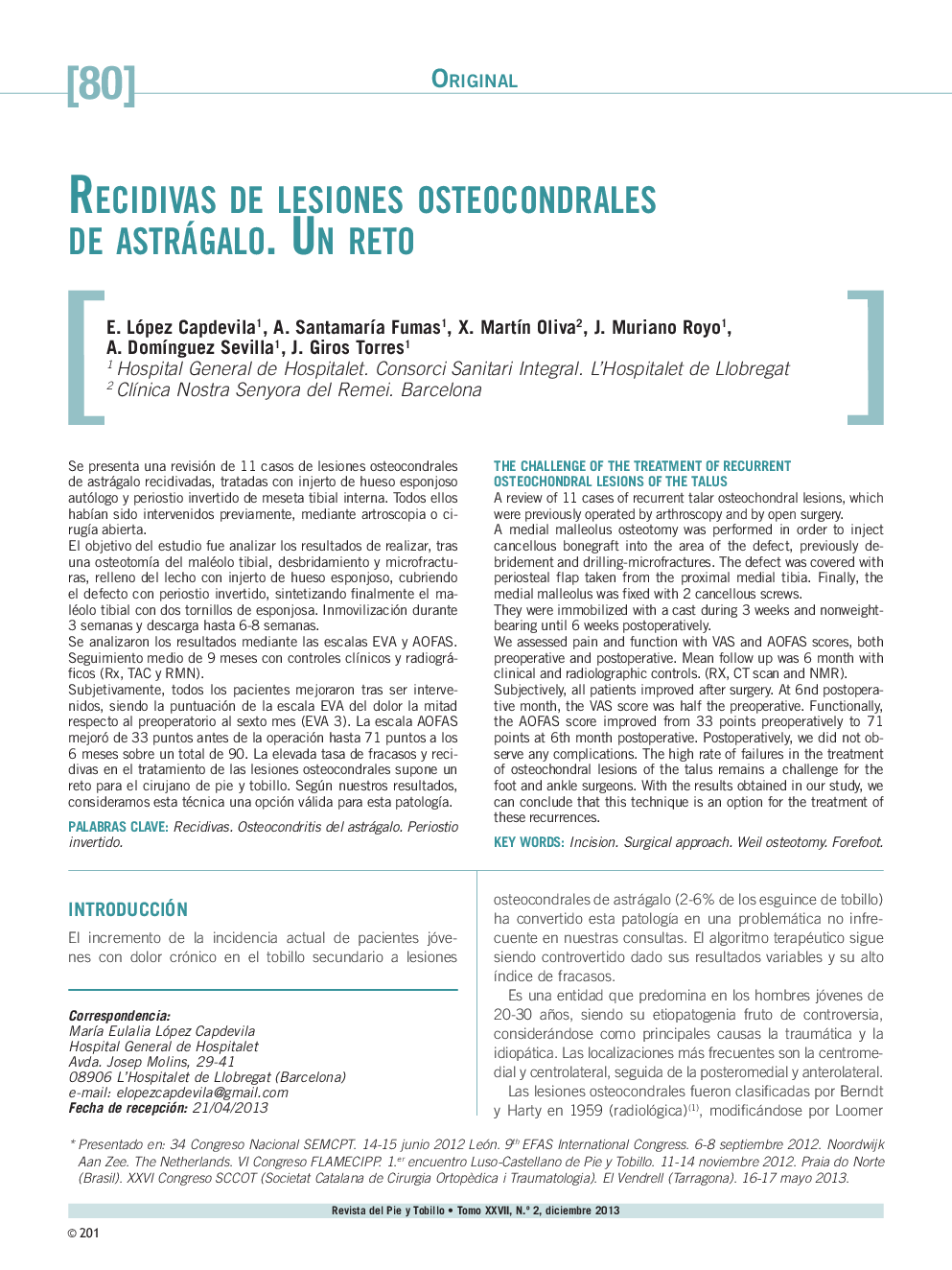| Article ID | Journal | Published Year | Pages | File Type |
|---|---|---|---|---|
| 4306291 | Revista del Pie y Tobillo | 2013 | 7 Pages |
Se presenta una revisión de 11 casos de lesiones osteocondrales de astrágalo recidivadas, tratadas con injerto de hueso esponjoso autólogo y periostio invertido de meseta tibial interna. Todos ellos habían sido intervenidos previamente, mediante artroscopia o cirugía abierta.El objetivo del estudio fue analizar los resultados de realizar, tras una osteotomía del maléolo tibial, desbridamiento y microfracturas, relleno del lecho con injerto de hueso esponjoso, cubriendo el defecto con periostio invertido, sintetizando finalmente el maléolo tibial con dos tornillos de esponjosa. Inmovilización durante 3 semanas y descarga hasta 6-8 semanas.Se analizaron los resultados mediante las escalas EVA y AOFAS. Seguimiento medio de 9 meses con controles clínicos y radiográficos (Rx, TAC y RMN).Subjetivamente, todos los pacientes mejoraron tras ser intervenidos, siendo la puntuación de la escala EVA del dolor la mitad respecto al preoperatorio al sexto mes (EVA 3). La escala AOFAS mejoró de 33 puntos antes de la operación hasta 71 puntos a los 6 meses sobre un total de 90. La elevada tasa de fracasos y recidivas en el tratamiento de las lesiones osteocondrales supone un reto para el cirujano de pie y tobillo. Según nuestros resultados, consideramos esta técnica una opción válida para esta patología.
A review of 11 cases of recurrent talar osteochondral lesions, which were previously operated by arthroscopy and by open surgery.A medial malleolus osteotomy was performed in order to inject cancellous bonegraft into the area of the defect, previously debridement and drilling-microfractures. The defect was covered with periosteal flap taken from the proximal medial tibia. Finally, the medial malleolus was fixed with 2 cancellous screws.They were immobilized with a cast during 3 weeks and nonweightbearing until 6 weeks postoperatively.We assessed pain and function with VAS and AOFAS scores, both preoperative and postoperative. Mean follow up was 6 month with clinical and radiolographic controls. (RX, CT scan and NMR).Subjectively, all patients improved after surgery. At 6nd postoperative month, the VAS score was half the preoperative. Functionally, the AOFAS score improved from 33 points preoperatively to 71 points at 6th month postoperative. Postoperatively, we did not observe any complications. The high rate of failures in the treatment of osteochondral lesions of the talus remains a challenge for the foot and ankle surgeons. With the results obtained in our study, we can conclude that this technique is an option for the treatment of these recurrences.
